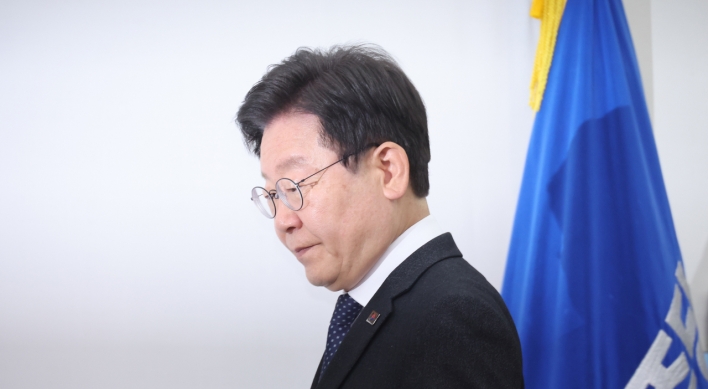Once-thriving art, music institutes struggle
Korea’s lopsided education fever driving out private education for art and music
By Yoon Min-sikPublished : Feb. 3, 2014 - 20:12

Kim Jung-ryun remembers her piano institute being packed with children 10 years ago. Since then, the number of students attending her institute has dropped by a third.
“Parents these days do not really care about music,” said Kim, 64, a piano teacher in Seogyo-dong, northwestern Seoul. “On top of that, children have to learn English and so forth. There is simply not enough time.”
The small art and music private institutes, or hagwons as they are called here, are becoming harder to find. This is partly due to the prolonged economic slump, which has limited the amount of money spent on private education.
According to the Ministry of Education, Koreans spent a total of 19.4 trillion won ($17.9 trillion) on private education in 2012, 5.4 percent less than the year before. Money spent on English and math accounted for a combined 65 percent of the total private education spending.
Despite the strained budget, the competition to enter elite schools remains strong. This means continued emphasis on subjects like math and English education. English tutoring fees had a rather modest drop of 4.6 percent while spending on math increased by 2 percent.
Expenses on art-related subjects, on the other hand, shrank by 12.2 percent, showing that art and music hagwons are now more dispensable than ever.
Lee Seon-young, a professor of education at Seoul National University, said this happens because Korean parents put too much emphasis on their children entering top schools.
“There is a general outline of how to enter colleges in Korea,” Lee said, which she said centers on subjects like English, math and Korean. “As long as the outline remains unchanged, it is hard to get students to be invested in subjects not directly related to college entrance.”
In the past, elementary school days were considered a grace period before the competition for elite schools commenced. But parents now seem to feel their children should start earlier.
While many students enjoy music or art classes, their parents usually have the final say over which hagwons they should go to.
“(In terms of private education) most students start English as early as the first grade, and start math around third grade. By the time they reach the fifth grade, the education costs really start to swell,” said Shin, 40, who runs Hangyang Music School in Jongam-dong, and asked that only his family name be used.
The monthly tuition for music hagwons generally ranges from 70,000 won to 150,000 won. As Koreans spend an average of 236,000 won a month on private education, going to a music hagwon would limit one’s options in choosing other institutes.
Shin said the usual trend in the area is for students to stop going to art hagwons around third grade, and to quit music schools around the fifth or sixth grade.
According to the Korea Association of Hagwon, the number of English institutes reached 9,967 in 2012, a heady increase of 28.5 percent from 2009. During the same period, the number of music and art hagwons slumped 3.2 percent and 20.7 percent to 14,600 and 5,300.
Although music and art are taught at public schools, the classes are largely devoted to theory and students are rarely able to learn an instrument or learn to draw by just studying the subject at school.
Professor Lee of SNU voiced caution against this trend, saying exposure to art is critical for stimulating children’s creativity. Cultural experiences help children develop flexible thinking and learn how to sympathize with others, she said.
“The development of a child’s gifts and potential abilities, the realization of what he or she is good at is only possible through various experiences,” said Lee, who specializes in education for gifted children. “By denying the children access to art, such possibilities are being taken away. They’re only told to memorize knowledge, which deprives them of opportunities to become creative.”
As parents turn away from music and art hagwons, the institutes are resorting to dramatic measures to win some students back, such as widening the range of instruments they teach or minimizing the fees.
Park Min-jun, 32, the owner of Yein Dance School in Jongam-dong, said some dance hagwons engage in price wars in a desperate attempt to attract students.
Some students express frustration at not being able to dictate what kind of education they receive.
An 11-year-old girl currently attending a math hagwon in Nowon-gu said she stopped taking piano lessons last year because of an increasing workload. Since she could not drop any subjects related to school work, she had to give up piano lessons.
“Was I happy with the situation? Not really. But what choice do I have?” she said.
By Yoon Min-sik (minsikyoon@heraldcorp.com)





![[Herald Interview] 'Amid aging population, Korea to invite more young professionals from overseas'](http://res.heraldm.com/phpwas/restmb_idxmake.php?idx=644&simg=/content/image/2024/04/24/20240424050844_0.jpg&u=20240424200058)












![[KH Explains] Korean shipbuilding stocks rally: Real growth or bubble?](http://res.heraldm.com/phpwas/restmb_idxmake.php?idx=652&simg=/content/image/2024/04/25/20240425050656_0.jpg&u=)

